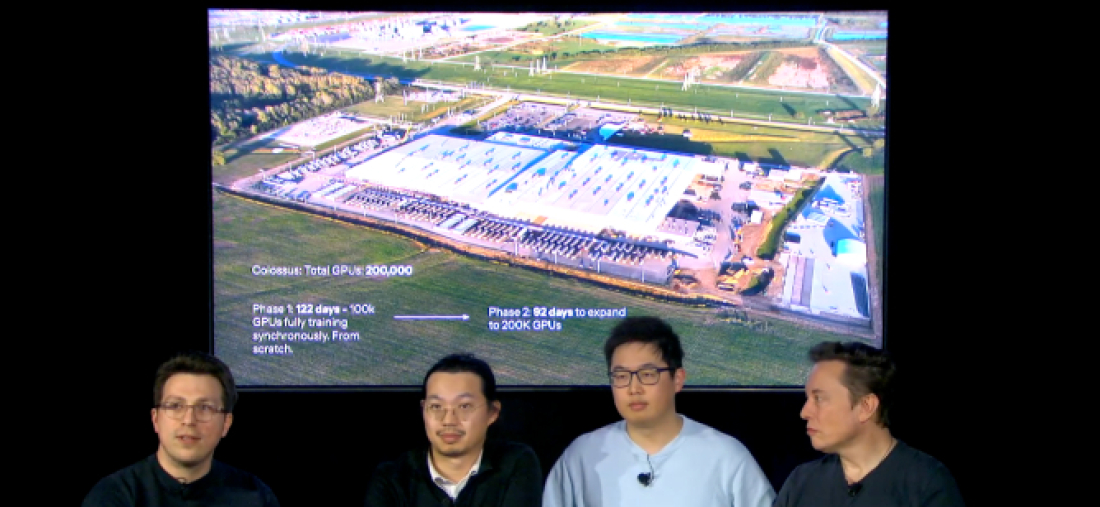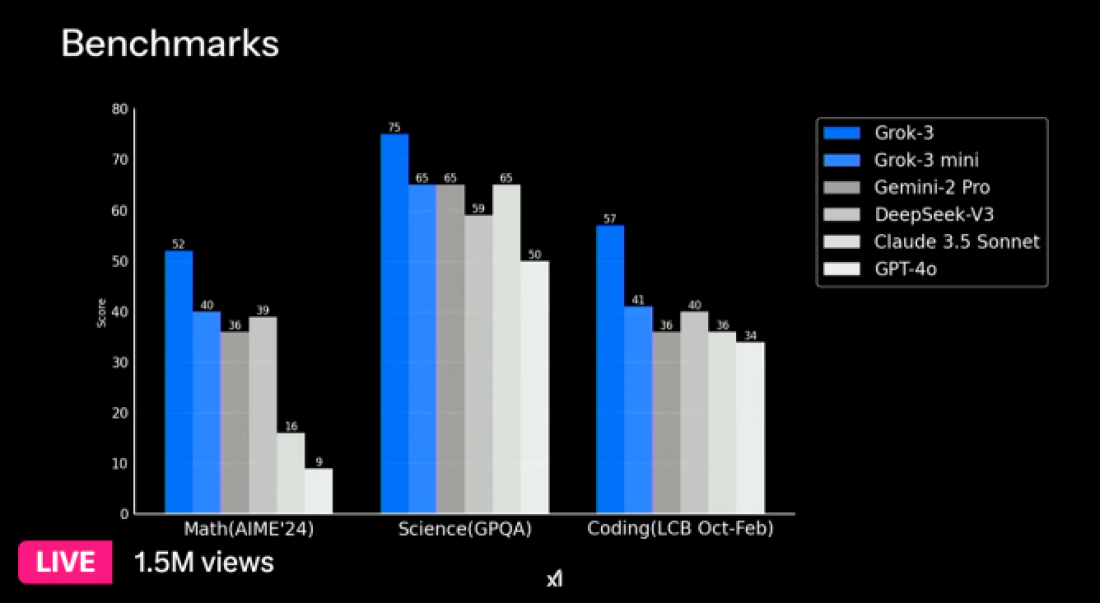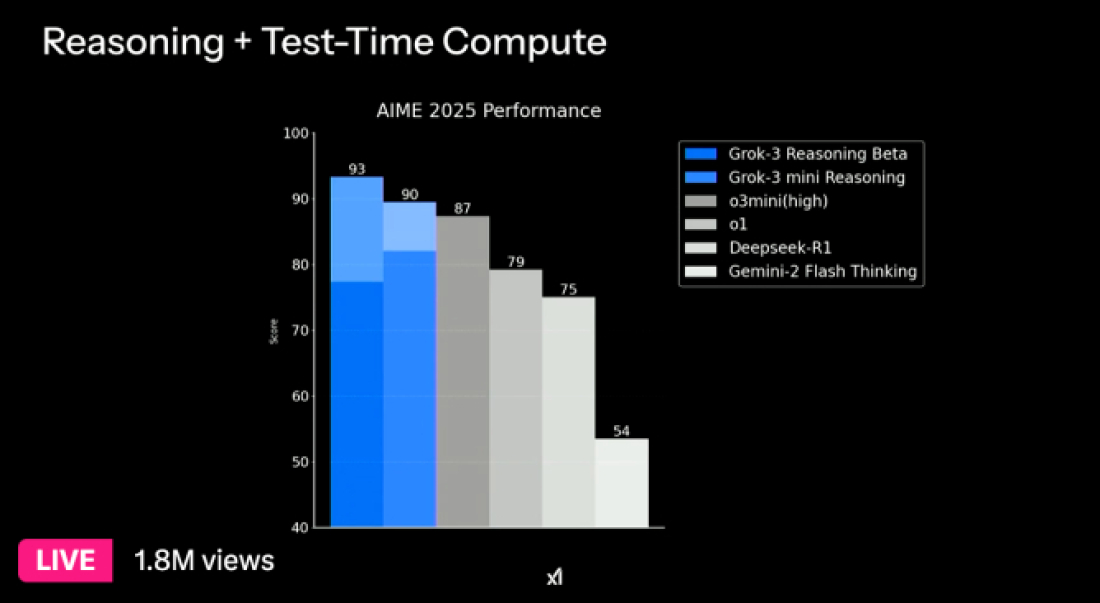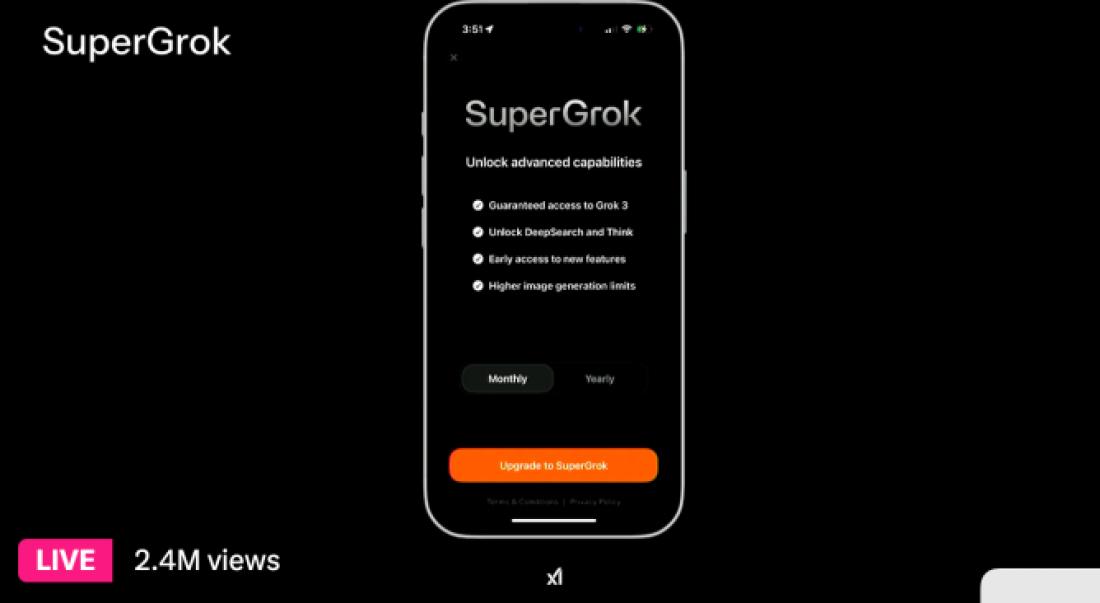View: India navigates defence and trade with Russia while courting global partners
Putin’s visit to India has put the spotlight on New Delhi’s evolving defence strategy as it seeks to modernise Russian-made systems with domestic ...
February 23, 2025 – Elon Musk’s AI company, xAI, has launched its latest flagship AI model, Grok 3, unveiling new capabilities for its Grok iOS and web applications.
Grok 3, positioned as a competitor to OpenAI’s GPT-4o and Google’s Gemini, offers enhanced reasoning capabilities and image analysis, further integrating with Musk’s social network, X.
Grok 3: enhanced AI capabilities
Grok 3 has been in development for months and was initially slated for release in 2024 but experienced delays. The model was trained using an enormous data center in Memphis containing approximately 200,000 GPUs. According to Musk, the new model was developed with “10x” more computing power than its predecessor, Grok 2, leveraging a more extensive training dataset, including legal filings.

“Grok 3 is an order of magnitude more capable than Grok 2,” Musk stated during a live-streamed presentation. “[It’s a] maximally truth-seeking AI, even if that truth is sometimes at odds with what is politically correct.”
Grok 3 model variants and features
The Grok 3 family includes multiple versions:
Grok 3 mini: Offers faster response times at the cost of some accuracy.
Grok 3 Reasoning & Grok 3 mini Reasoning: Designed to carefully “think through” problems, similar to OpenAI’s o3-mini and DeepSeek’s R1. These models aim to fact-check themselves before responding, improving accuracy.
Grok 3 is currently rolling out in phases, with some features still in beta. The new models reportedly outperform GPT-4o in AI benchmarks such as AIME (mathematics performance) and GPQA (graduate-level science questions). Additionally, xAI claims that Grok 3 Reasoning surpasses OpenAI’s o3-mini-high in mathematics assessments, including AIME 2025.

New capabilities: DeepSearch and Reasoning enhancements
The reasoning models power DeepSearch, xAI’s AI-powered research tool, which scans the internet and X to generate detailed abstracts in response to user queries. Users can activate Grok 3’s enhanced reasoning through:
“Think” mode: For complex questions requiring deeper analysis.
“Big Brain” mode: A high-compute setting designed for advanced problem-solving.
To prevent unauthorized knowledge extraction, xAI has partially obscured the reasoning models’ thought processes in the Grok app. This measure follows recent controversies, such as DeepSeek’s alleged distillation of OpenAI models.

Subscription tiers and upcoming features
Grok 3 will first be available to X Premium+ subscribers ($22/month), while advanced features will require a new SuperGrok plan, reportedly priced at $30/month or $300/year. This premium tier grants additional reasoning queries, DeepSearch access, and unlimited image generation.

Upcoming enhancements include:
Voice Mode (within a week): A synthesized voice for Grok models.
Enterprise API Access (within weeks): xAI will offer Grok 3 and DeepSearch via API for business integration.
Future Open-Source plans and political neutrality pledge
Musk announced that xAI intends to open-source Grok 2 in the coming months, following a pattern where previous models are made public once new versions become stable.
“When Grok 3 is mature and stable, which is probably within a few months, then we’ll open-source Grok 2,” Musk confirmed.
Grok was initially marketed as an “edgy” and “unfiltered” AI model that could answer controversial questions other models avoided. However, past versions hedged on political topics, with one study suggesting a left-leaning bias on issues such as transgender rights and diversity programs. Musk has attributed this to training data limitations and has pledged to shift Grok toward greater political neutrality. Whether xAI has achieved this goal remains unclear, but the company continues to push boundaries in AI development.
As Grok 3 rolls out, its real-world performance and reception will determine its place in the competitive AI landscape.
Scores of demonstrators gathered outside the Norwegian Nobel Institute in Oslo Tuesday (9 December) to protest against the awarding of this year’s Nobel Peace Prize to Venezuelan opposition leader Maria Corina Machado.
Iran and Saudi Arabia reiterated their commitment to enhance ties following a joint meeting with China in Tehran on Tuesday to follow up on implementation of the 2023 Beijing Agreement which resulted in resumption of their diplomatic relations after eight years.
The world’s leading minds and voices will be honoured on Wednesday, 10 December, the anniversary of Alfred Nobel’s death, as Nobel Prizes are presented in Stockholm and Oslo.
In a dramatic Champions League clash at Baku’s Tofiq Bahramov Stadium, Qarabağ grabbed an early lead, but Ajax staged a thrilling comeback to win 4-2.
Ukraine "deeply appreciates" the humanitarian support of Pope Leo XIV. This was stated by Ukrainian President Volodymyr Zelenskyy after a meeting between the two at the papal residence of Castel Gandolfo, on Tuesday, 9 December.
Children are forming new patterns of trust and attachment with artificial intelligence (AI) companions, entering a world where digital partners shape their play, their confidence and the conversations they no longer share with adults.
The International Robot Exhibition (IREX) opened in Tokyo on 3 December, bringing together visitors to explore robotics applications for industry, healthcare, logistics, and everyday life.
A bipartisan group of U.S. senators, including prominent Republican China hawk Tom Cotton, introduced the SAFE CHIPS Act on Thursday, aiming to prevent the Trump administration from easing restrictions on China’s access to advanced artificial intelligence (AI) chips for a period of 2.5 years.
A former Apple engineer has unveiled a new Chinese chip designed to compete directly with Apple’s Vision Pro headset.
Chinese AI startup DeepSeek has introduced its newest model, DeepSeek-V3.2-Speciale, claiming it can perform some tasks as well as the latest models from Google DeepMind and OpenAI.
You can download the AnewZ application from Play Store and the App Store.

What is your opinion on this topic?
Leave the first comment